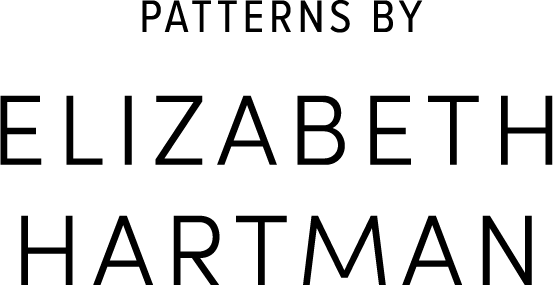
If you’ve ever experienced the frustration of pieced units that don’t quite line up, or blocks that don’t quite turn out the right size, there’s a good chance you’ve been sewing with an inaccurate seam allowance.
The old rule about taking a “scant” quarter inch is fine for some projects, but it’s not always accurate enough for patterns like mine that involve a lot of precision patchwork. For best results with my patterns, it’s important to sew with a precise quarter inch seam allowance.
In this context, a precise quarter inch seam allowance does not mean that the seam allowance itself measures exactly one quarter inch, but that the seam allowance results in the finished piece being exactly one quarter inch smaller on each side. So, if a cut piece starts out at 2-1/2” x 2-1/2”, it should finish at exactly 2” x 2”.
The weight of the fabric, pressing technique, and even many of our natural tendencies to rotary cut pieces a little big or a little scant can all affect the accuracy of seam allowance. That’s why doing a practical test that involves rotary cutting and pressing the actual fabrics being used in a patchwork project can be more helpful than assuming that a special machine foot or needle position alone will give you the results you want.
That test is very easy to do!

Start by cutting 2 pieces of fabric, 2” x 2” each. Sew the pieces together, and press the seam open.
Unless otherwise noted in a pattern, I recommend pressing patchwork seams open. However, if you’re pressing to the side in your project, you should also press to the side in your seam allowance test.

Measure the pieced unit by placing a ruler on top of it. If it measures exactly 3-1/2” across, congratulations! Your seam allowance is perfect.

If your pieced unit is wider than 3-1/2”, your seam allowance is too scant. A seam allowance that’s too scant (doesn’t take up enough fabric) makes a pieced unit that’s too big.

If your pieced unit is smaller than 3-1/2”, your seam allowance is too generous. A seam allowance that’s too generous (takes up too much fabric) makes a pieced unit that’s too small.
Make small adjustments to the way you’re feeding your fabric through the machine and, if applicable, to your needle position, until your seam allowance is just right. Once you’ve determined where you need to line up your fabric to achieve a perfect seam allowance, you may want to mark that spot with a piece of blue painter’s tape or washi tape.
I recommend doing this test even if you’re using a quarter inch piecing foot, as you may find that you need to start pushing the fabric against the guide/flange a little more or less than you’ve been doing.
That’s it! A few minutes of testing can save a lot of time and headache during a big project!
